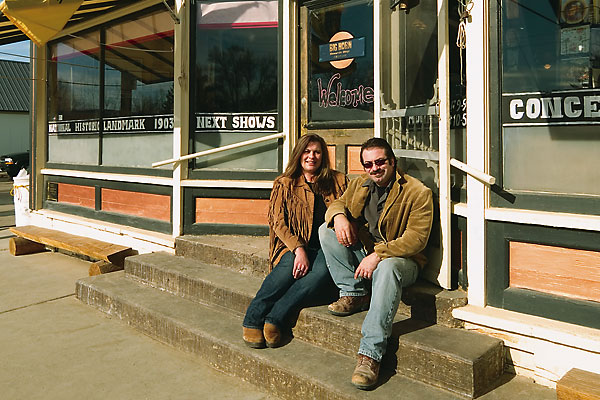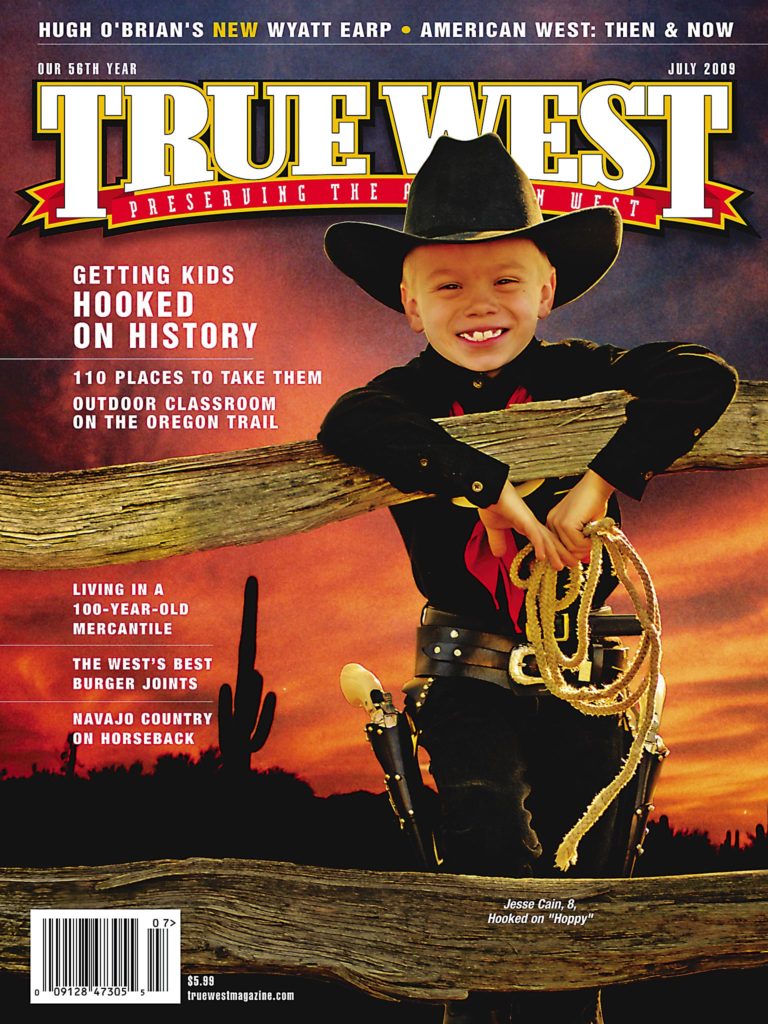
You might say the nesting instinct drew Lori Huff and her family back to Ten Sleep, Wyoming (population 304), but their journey was also motivated by a desire to restore a piece of the past and give back to a community steeped in history.
While Lori had grown up in the Ten Sleep area, husband Marcus, a former True West editor, had never experienced life in such a small town.
Not content to move into a standard Wyoming home, they purchased a century-old mercantile store that was a National Historic Landmark. Although it needed major renovation, the 1903 structure had been solidly constructed by the owner of the local lumber mill. Over the years, the building had served Ten Sleep as a mercantile, liquor store, hardware store and series of restaurants.
For the Huff family, including children Kahle Kuronen, 20, Morgan, 15, Elias, 13, and Hawkeye, 11, it has become both a home and a business. The family lives on the upper floor and operates the Big Horn Mountain Stage downstairs, selling items reflecting the early pioneer days (they have barrels of toy cowboys and Indians) and hosting concerts and historical programs on the stage. Next door, in a log cabin built to replicate a homestead house, they operate Sackett’s Fork, where they serve pizza baked in a wood-fired oven.
“When we purchased it, it had been abandoned for about a year,” Marcus says of the mercantile building. Restoration took a year and a half. Now that it is finished, the Huffs have a place to showcase their antiques.
“We tried to incorporate a little bit of everything it has always been,” Marcus says. “In the old days it was a dance hall, mercantile, offices for the Ten Sleep rodeo. Some of the old guys tell me it was a bordello at one time.”
The restoration extended from the original wood floors to the 1,800 square feet of pressed tin ceilings on both floors. The tin, made at St. Louis Tin Works, was transported by train to Sheridan and then hauled over the Bighorn Mountains by wagon. “It’s really miraculous,” Marcus says of the condition of the ceiling. “We only had about 10 feet that we had to repair in the whole building.”
As a historian, Marcus wanted to restore a national landmark. “The beauty of it is it is right here in Lori’s hometown.” Ten Sleep is a small ranching community, and Marcus, who grew up in a community of 20,000 people in Oklahoma, says, “The small town has been a larger challenge to get used to than the old building.”
“One of our best-selling products is a bumper sticker: ‘Ten Sleep, Wyoming, 300 people and 600 opinions,’” he says. “I’m related by marriage to a whole auditorium full of people. It gets interesting, it gets real interesting.”
The town is a “great environment for kids.” As Marcus notes, “There’s so few kids, when the 15 year olds go out, they don’t mind taking the 11 year old with them.”
Marcus arrived in town three months before his family, camping out as he began the building restoration. “The roof had literally not been maintained in years, so this place was taking on water like a ship; it was unbelievable,” he says. Fortunately the original owner was a lumber man, who used truly beautiful wood in the construction.
When Marcus and Lori stripped the 1970s-era wood paneling from the walls upstairs in the area that is now their home, they found original wood trim still in place, which they removed, refinished and reinstalled. They based the home on a turn-of-the-20th-century design for an apartment from Sears and Roebuck.
They put up reproduction wallpaper throughout the building, added an outdoor deck that they built from logs hauled out of the nearby Bighorn Mountains and designed kitchen cabinets in apothecary style, with no doors, providing an open, accessible space.
In moving to Ten Sleep, the Huff family “redesigned our whole way of life,” Marcus says. “We always wanted to focus on our antiques. They were in the backroom on display. Here they are all functional.”
One concession to modern times came in the bathroom; it has a modern tub while keeping other Victorian-era décor.
Fully vested in the community, Marcus says he can “throw in my skills as a historian and writer” to work on events for the business. Since the town doesn’t have a newspaper, he also periodically publishes Ten Sleep Grit. An issue comes out “whenever there is news.” He is careful to “keep all the gossip and drama out of it.”
Of all the businesses in Ten Sleep—restaurants come and go—Marcus says the primary establishments will always be the “two bars and the six churches.”
Restoration is not uncommon in the small town. When Marcus arrived, two other new owners were working in their own older buildings. “I was unloading our U-Haul, while they were unloading their U-Haul,” he says, prompting him to wonder, “Holy Cow, what are we all doing?”
One thing is for certain, those involved in restoring the buildings have a dedication to history. Like the Crazy Woman Café, which the owner named after a local Crow legend. In the mid-1840s, a half-breed trader was supposedly killed by Crows and his white wife hid in the area, fed for a time by sympathetic Crow women.
“The Ten Sleep Saloon of course will never get rid of that name,” Marcus adds. “The original Ten Sleep Saloon was on 1st Street. Calamity Jane would come and visit friends in Ten Sleep and would invariably end up there.”
Do the Huffs get as wild in Ten Sleep as Calamity Jane did? “Our idea of a fun Friday night is making soap and doing leatherwork,” Marcus says.





